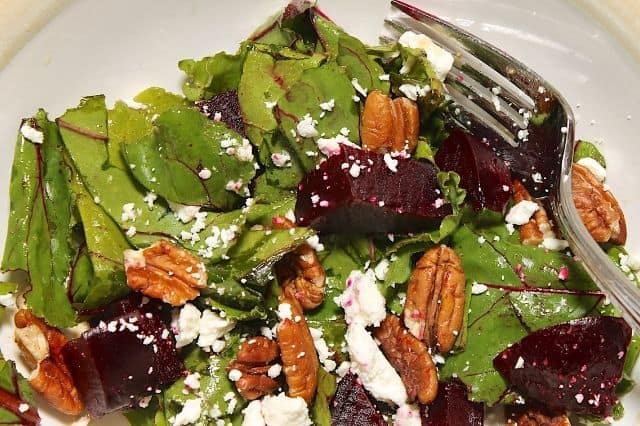38 based on your analysis of the food labels from the four foods
Understanding Ingredients on Food Labels - American Heart Association Understanding Ingredients on Food Labels. Food labels are an important source of information about calories and the nutritional value of the foods you eat, a crucial tool in building a heart-healthy diet. The Nutrition Facts information is always displayed in the same orderly fashion and helps you understand how much of certain nutrients that ... Food Label Ingredients: How to Look for MSG, Trans Fat, and more - WebMD A food that promises to be trans fat free may in fact contain up to 0.5 grams of partially hydrogenated oils, a source of trans fats, in the ingredient list. "Ingredient lists are a good way to ...
Understanding Food Nutrition Labels - Heart 1 - Start with the serving information at the top. This will tell you the size of a single serving and the total number of servings per container (package). 2 - Next, check total calories per serving and container. Pay attention to the calories per serving and how many calories you're really consuming if you eat the whole package.

Based on your analysis of the food labels from the four foods
Food labels - Better Health Channel The food label will tell you all sorts of information, including: what the food is manufacturer's details nutrition information ingredients weights and measures of product date marking directions for use and storage country of origin allergens and additives any nutrition and health claims. Are food labels excluding the visually impaired? Operated by the UK Food Standards Agency (FSA), the scheme labels four nutrients - sugars, fat, saturated fatty acids and salt - and assigns a colour - red, amber and green - depending on levels in the product. The fact that these three commonplace examples, however, are all interpreted visually, suggests that such labels exclude the ... Nutrition Exam 1 Flashcards | Quizlet You are presenting to a group of consumers about ways to use food labels to choose healthy foods in the grocery store. During your presentation, what would you emphasize? a. converting the values present in grams to kilograms b. comparing similar food products based on nutrient components c. understanding the terms used on food labels d ...
Based on your analysis of the food labels from the four foods. The Basics of the Nutrition Facts Label - Eatright.org Step 4: Check Out the Nutrition Terms. Low calorie: 40 calories or less per serving. Low cholesterol: 20 milligrams or less and 2 grams or less of saturated fat per serving. Reduced: At least 25% less of the specified nutrient or calories than the usual product. Good source of: Provides at least 10 to 19% of the Daily Value of a particular ... PEST Analysis Example for the Food Industry | Case Study Template This is true for our PEST analysis example for the food industry. Political Factors. Trends affect the food industry. Fast food restaurants are adding "healthier options" on their menus as public health policies are pushing for foods with lower sodium and sugar intakes. Current policies push for the public to be more conscious when buying ... How to Read Food Labels Without Being Tricked - Healthline Low-calorie products have to have one-third fewer calories than the brand's original product. Yet, one brand's low-calorie version may have similar calories as another brand's original. Low-fat.... How to Understand and Use the Nutrition Facts Label | FDA Dietary fiber, vitamin D, calcium, iron ad potassium are nutrients on the label that Americans generally do not get the recommended amount of. They are identified as nutrients to get more of....
The five main food groups - Food Standards Scotland Processed meat includes things like sausages, bacon, burgers, ham, salami, other cured meats and pâté. Eating too much red and processed meat can increase the risk of bowel cancer. Aim to eat no more than 70g of red and processed meat a day - that's around two slices of roast meat or two sausages. ANALYSIS OF FOOD PRODUCTS - UMass Foods are analyzed by scientists working in all of the major sectors of the food industry including food manufacturers, ingredient suppliers, analytical service laboratories, government laboratories, and University research laboratories. The various purposes that foods are analyzed are briefly discussed in this section. 1.1.1. Pet Food Labels - General | FDA Calculating the dry matter protein of both, the canned contains 32% crude protein on a dry matter basis (8/25 X 100 = 32), while the dry has only 30% on a dry matter basis (27/90 X 100 = 30). Thus,... Nutrition - CH.2 Flashcards | Quizlet A. the canned peaches are more processed than the raw peach B. The raw peach is higher in color than the canned peaches C. The raw peach contains similar nutrients but fewer calories because of the added sugars in the canned D. the canned peaches contain more vitamins per calorie than the raw peach
Food labels: A critical assessment - ScienceDirect FOP labels should be based on a clear and simple design. They should present information on key nutrients (total fat, saturated fat, sugar, and sodium or salt) and also energy value. They should have color and words that indicate "high," "medium," and "low" levels. Labels can also state quantity per serving. Food label accuracy of common snack foods - Wiley Online Library As specified by the Code of Federal Regulations ( ( 10) ), calories on food labels represent metabolizable energy, that is, total (gross) calories minus calories that are excreted in stool and urine. However, doubts regarding the accuracy of energy content labeling of packaged foods have been expressed. Reading Food Labels (for Parents) - Nemours KidsHealth The food label gives total carbohydrates along with fiber, total sugars, and added sugars. Dietary Fiber Dietary fiber itself has no calories and is a necessary part of a healthy diet. Fiber can help you feel full and promotes bowel regularity. High-fiber diets can help lower cholesterol levels and may help reduce the risk of colon cancer. Sugars Nutrition: Lesson 2 Nutrient & Food Label Facts Here are the things you should look for on labels: *The name of the food. *How much the contents weigh. *The style (sliced, chopped, whole) *The packing style (heavy syrup, water, oil) *Name and address of the manufacturer or packer. *List of ingredients?listed from most to least by weight. *Nutrition Facts
Nutrition labelling | Food Standards Agency Declared values must be based on: manufacturer's analysis of the food calculation from the known or actual average values of the ingredients used calculation from generally established and accepted...
Food Labels | Nutrition.gov Food and Drug Administration (FDA) regulates the safety of food for humans and animals, including foods produced from genetically engineered (GE) plants, sometimes referred to as "genetically modified organisms" (GMOs). Find out more about the safety of GE plants, and how they are regulated here. Feed Your Mind: Agricultural Biotechnology/GMOs
7 Presentation of Nutrition Information on Food Labels To assure that the nutrition information provided on a food label is conveyed in a manner that will allow the majority of consumers to use it successfully, a number of criteria need to be considered, including literacy of users, computational abilities, knowledge of English, and knowledge of the specialized vocabulary of nutrition labeling. The actual label presentation scheme needs to make it ...
Global Health and Wellness Foods Market Report 2022 - Market to Reach ... Dairy-Based Functional Yogurt: The Most Popular Probiotic Food Protein-Fortified Products Rise in Demand Free-From Foods: A Transformative Trend in the Food Industry
Food for Profit: Food Labels - Penn State Extension Nutrient information must be presented on a per-serving basis (the typical weight or number of pieces eaten) and must include calories, total fat, cholesterol, sodium, total carbohydrates, protein, vitamin D, calcium, iron, and potassium. Vitamins A and C can be included on a voluntary basis.
Food labels - NHS Most pre-packed foods have a nutrition label on the back or side of the packaging. These labels include information on energy in kilojoules (kJ) and kilocalories (kcal), usually referred to as calories. They also include information on fat, saturates (saturated fat), carbohydrate, sugars, protein and salt.
PDF Grades 3 to 5 • Personal Health Series Food Labels Have students research some of these "mystery ingredients" and discuss their findings. 2. A strawberry is red, and so are lots of candies. Research what gives fresh fruits and veggies their vibrant colors and compare that with how candies get their color. Grades 3 to 5 • Personal Health Series Food Labels 1 The emours FoundationKidsHealth.
How To Read Food and Beverage Labels - National Institute on Aging The serving size on the label is based on the amount of food that people may typically eat at one time and is not a recommendation of how much to eat. Read more about serving and portion sizes. The remainder of the label information is usually based on one serving of the food or beverage (see Food Label A).






Post a Comment for "38 based on your analysis of the food labels from the four foods"